
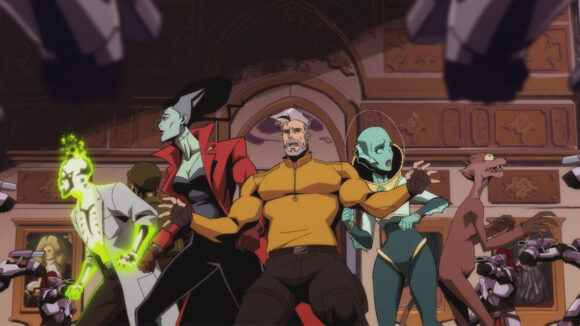
‘Creature Commandos’ Executive Producer Dean Lorey Is Making James Gunn’s Vision Come to Life
In 1980, DC Comics introduced a brand-new, motley crew of supernatural heroes, the Creature Commandos, into the ongoing series, Weird War Tales. The team of monsters was created by writer J. M. DeMatteis and artist Pat Broderick with stories set during WWII.
The team featured a werewolf, a Frankenstein monster, a gorgon, a vampire and was led by the average human soldier, Lt. Matthew Shrieve. The gang went on missions for three years before being retired from comics rotation until they were reinvented in 2000, and then evolved into their current iteration during The New 52 reboot in 2011. By that point, the Commandos became secret agents for S.H.A.D.E., the fictional U.S. military organization known as the Super Human Advanced Defense Executive.
It’s this iteration of the Creature Commandos that James Gunn, the co-chairman and co-CEO of DC Studios, fell in love with and greenlit as the first property to start his own rebooted DC Universe (DCU) of stories. The slight cheat being that this R-rated, adult animated series carries through the DCEU character Amanda Waller (Viola Davis), who first appeared in the 2016 feature Suicide Squad, and is still hanging around behind the scenes.
In this Creature Commandos series, she is back and creates Task Force M, a black ops team of monsters who are essentially blackmailed to play nice and abide by the leadership of General Rick Flag Sr. (Frank Grillo). He tries to rein in this unruly group which includes the amphibian scientist Nina Mazursky (Zoë Chao); the Nazi-killing android G.I. Robot (Sean Gunn); the radioactive Doctor Phosphorus (Alan Tudyk); the Bride (Indira Varma); and eventually, Eric Frankenstein (David Harbour).
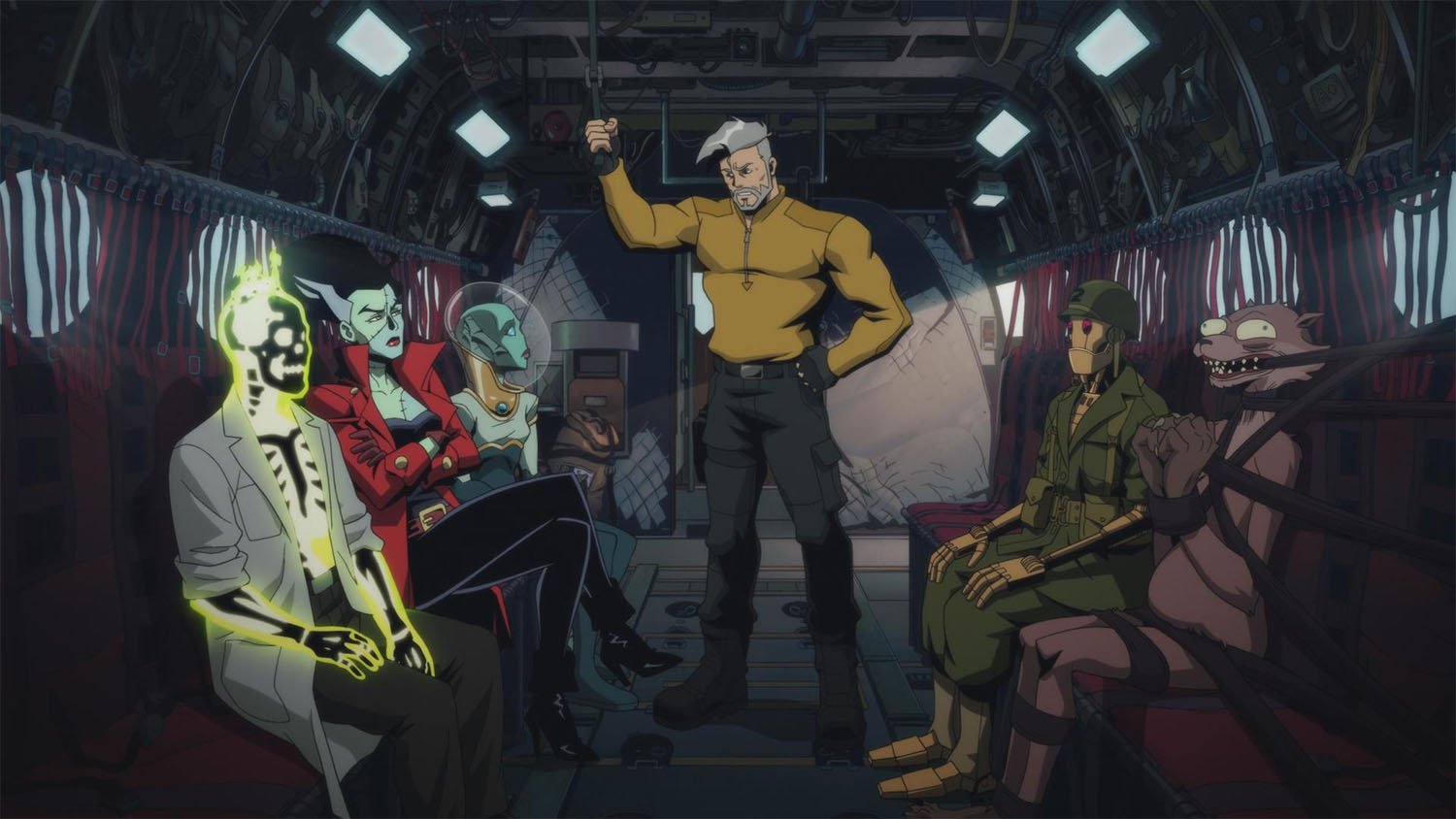
The seven-episode first season of Creature Commandos (debuting Thursday, December 5, on Max, followed by one episode weekly until January 9, 2025) was entirely written by Gunn and is showrun by Dean Lorey, who successfully executive produced Warner Bros. Animation’s other adult animated series, Harley Quinn and Kite Man: Hell Yeah! Cartoon Brew recently spoke with Lorey about executing Gunn’s vision, the aesthetic challenges of their show, and if there’s feature animation plans for these Commandos.
Cartoon Brew: Was it your existing successes with adult animation at Warner Bros. Animation and DC that led to you showrunning Creature Commandos?

Dean Lorey: Well, James was actually in one of the episodes of Harley Quinn as himself. He’d always been a fan. With Creature Commandos, it was a passion project for him. He started writing it before he was the [co-chairman] of DC. He wrote four of them, then he became [co-chairman]. He had always wanted to do it as an animated show, and potentially, as a live-action feature at some future point. But it started with animation.
The executive on it was Peter Girardi, who was also the executive on Harley Quinn and Kite Man. Peter came to me, and said, “Do you want to work on this with James?” The scripts were great, so I immediately wanted to be part of it. I met with James and met with Peter, and that’s how I came onto it. It was really pretty seamless.
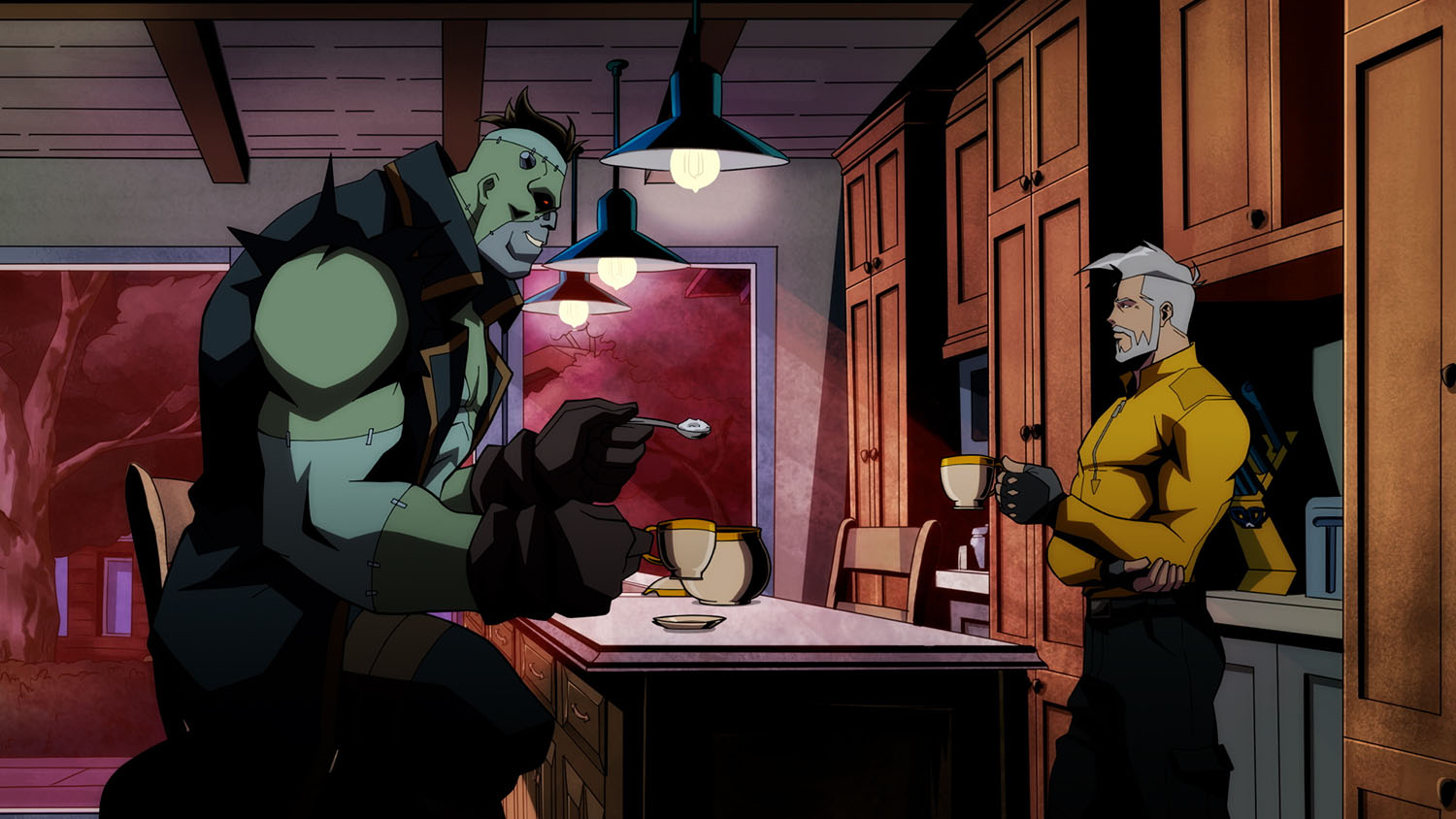
How did the hand-off work from Gunn over to you and supervising director Yves “Balak” Bigerel and Paris-based studio Bobbypills to make the day-to-day decisions?
First of all, James was involved in all the steps, which I was amazed he could do. I literally don’t know how he found the time to do it. But we would send him animatics. We would send him a variety of cuts, and he would always get back to us right away with very, very detailed notes. So it wasn’t like I just took it and ran with it. He was part of the process. But there’s a lot of interpretation when you’re just starting with a script. Rick Morales, our animation supervisor, was intimately involved in all this stuff. We worked with Bobbypills on the design and everything. But at some point you have to take some ownership of a project, even if you didn’t write it, just to get things done. Yet we always knew that having James around was like bowling with guardrails. We couldn’t get too far afield without him course correcting.
What were some of the things you decided?
A lot of it just became about taste. I like a very fast pace and so does James. Harley and Kite Man are cut very tight, and so is this. That sensibility came over to Creature Commandos, and I think we shared that sensibility even though they’re very different shows. Harley and Kite Man are sort of pure comedies with some drama in them. This is much more of a drama with action and a little comedy, but the DNA is very similar.
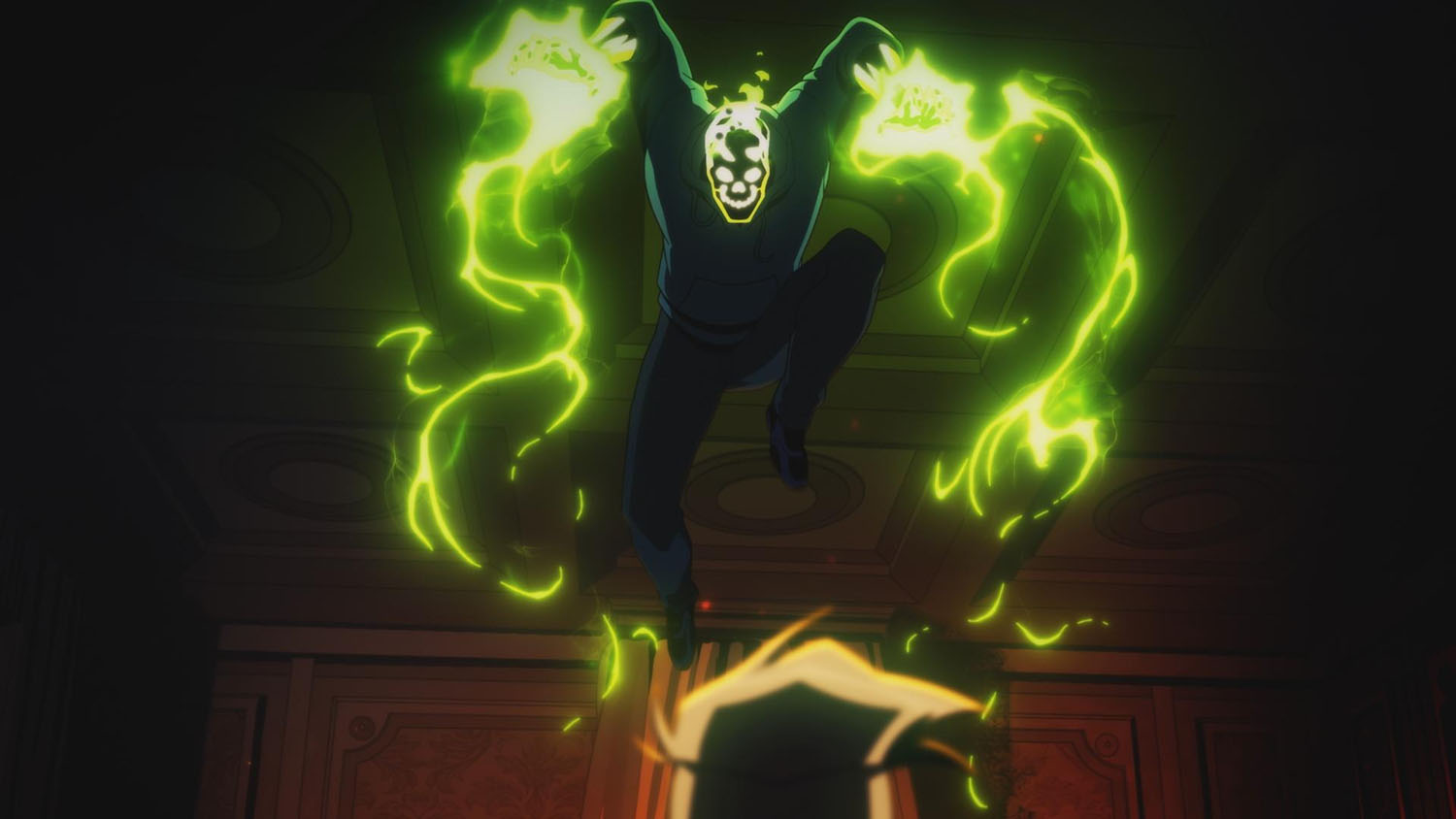
In terms of the overall aesthetics of this series and the character design, were there specific comic book issue references from Gunn, or did you have a lot of leeway there? Because essentially, you have a lot of period-specific creatures existing in contemporary times and that engenders a lot of choices.
Some of it came from prior works, like Belle Reve [prison] was already established in the features. James always thought of this show as canon so he wanted us to follow things that had been previously established. We did that, but we had a lot of flexibility on this show, because the majority of it takes place in Buchalistan which isn’t real. So, we very intentionally designed it to have a Gothic, lush, Eastern European feel, like the old Hammer horror movies. Our castles are always on top of a hill, so it’s that kind of stuff. But we really wanted it to feel lush and I think it does. We’re working with an eye towards a painterly quality, and part of that came from Bobbypills and also from our side. It was a lot of excited people working together. It was one of those projects where, as we were working on it, every now and then a new cut might come in, and then we’d see each other and be like, “Is this as good as we think it is?” Everybody was like, “We think we’re really working on a good show.”
Was there a character in your core lineup that was the most difficult to iterate?
I would say G.I. Robot was tough because we didn’t know exactly what we wanted it to be. We knew that he was designed in the ’40s and we wanted that classic look. But we also wanted a sweetness to him, yet he had to also be able to kill whole divisions of Nazis. It was tough trying to figure out where the weapons are on him, and what does he look like facially? But I would say that Sean Gunn, when we recorded his take on him, it was so specific and so interesting that it informed the look of the character.
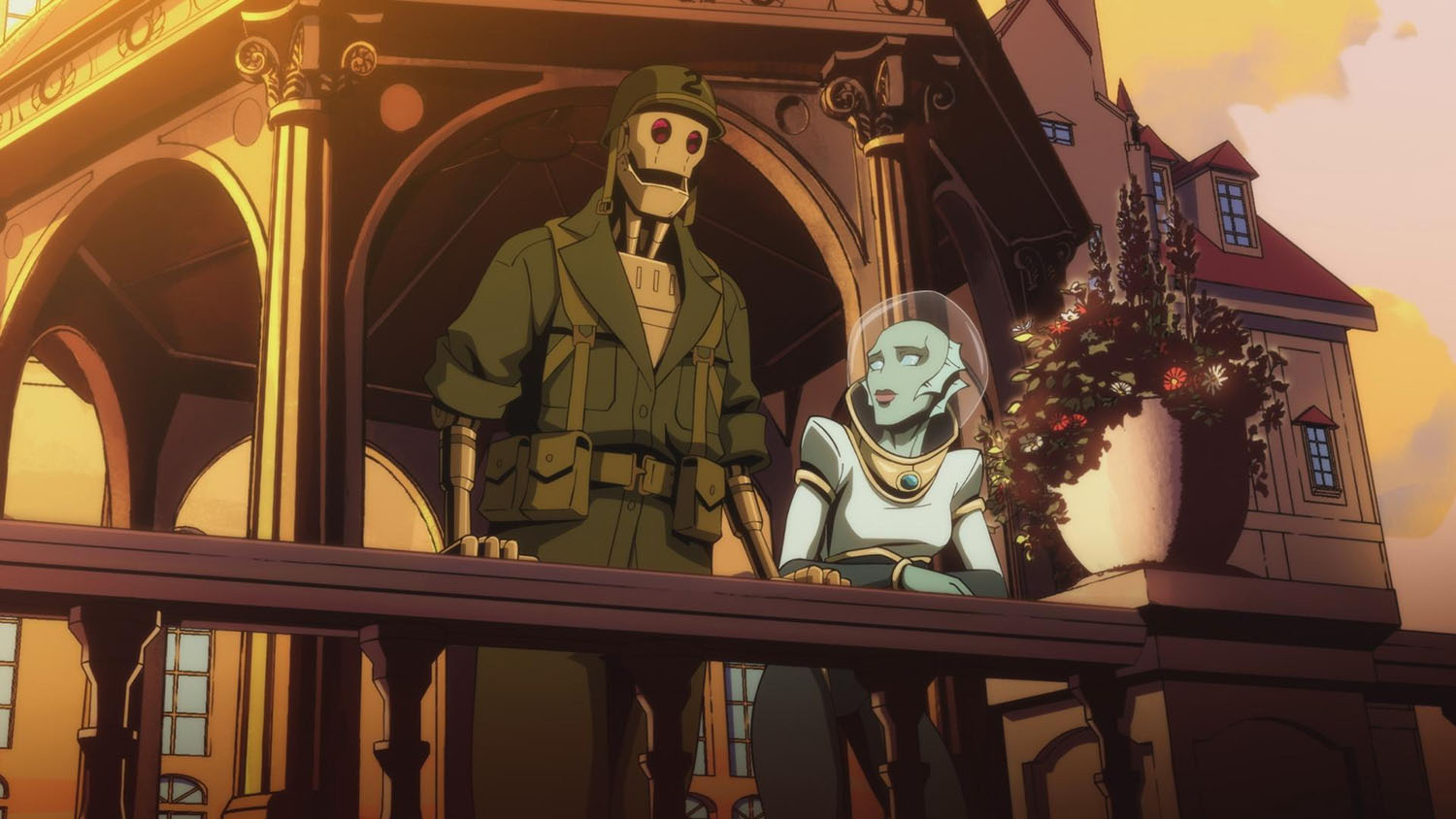
Then I would say Nina Mazursky required a good bit of work. Her [water] helmet, what does that look like? How does she breathe? Do you see bubbles? And I guess Frankenstein and the Bride, it was a little tough to find a contemporized version of those classic characters.
In the second episode, we get to see the squabbling Eric Frankenstein and Bride throughout decades and their adopted looks. Did the development of that sequence help you work out their current look in the series?
We didn’t actually work backwards from that, but it was a lot of trial and error. We wanted them to be recognizably those characters, but contemporized. A lot of it has to do with dress too, and that that helped. But also because most of the series takes place in Buchalistan, they fit naturally into those settings so that did some of the heavy lifting, too.
That sequence where we see Eric Frankenstein and the Bride chasing and fighting one another through time is one where the animation medium really allows you to do something live-action budgets would never allow. Are there more sequences like that in the first run of episodes that lean into the freedom that animation affords you?
That one is probably the biggest example. But I would say the weasel episode with the fire and the children, had we done that live action, I don’t think it would have landed properly. The distance that you get from animation, it just gives you one remove and I think you need that to see children in this kind of danger. So that was a place where I felt like animation has really helped us. And there’s a lot of scene construction that we were able to do in animation that you probably wouldn’t look to do in live action. There’s an episode where Frankenstein gets knocked out in a river, and that whole river sequence is very, very animation friendly.
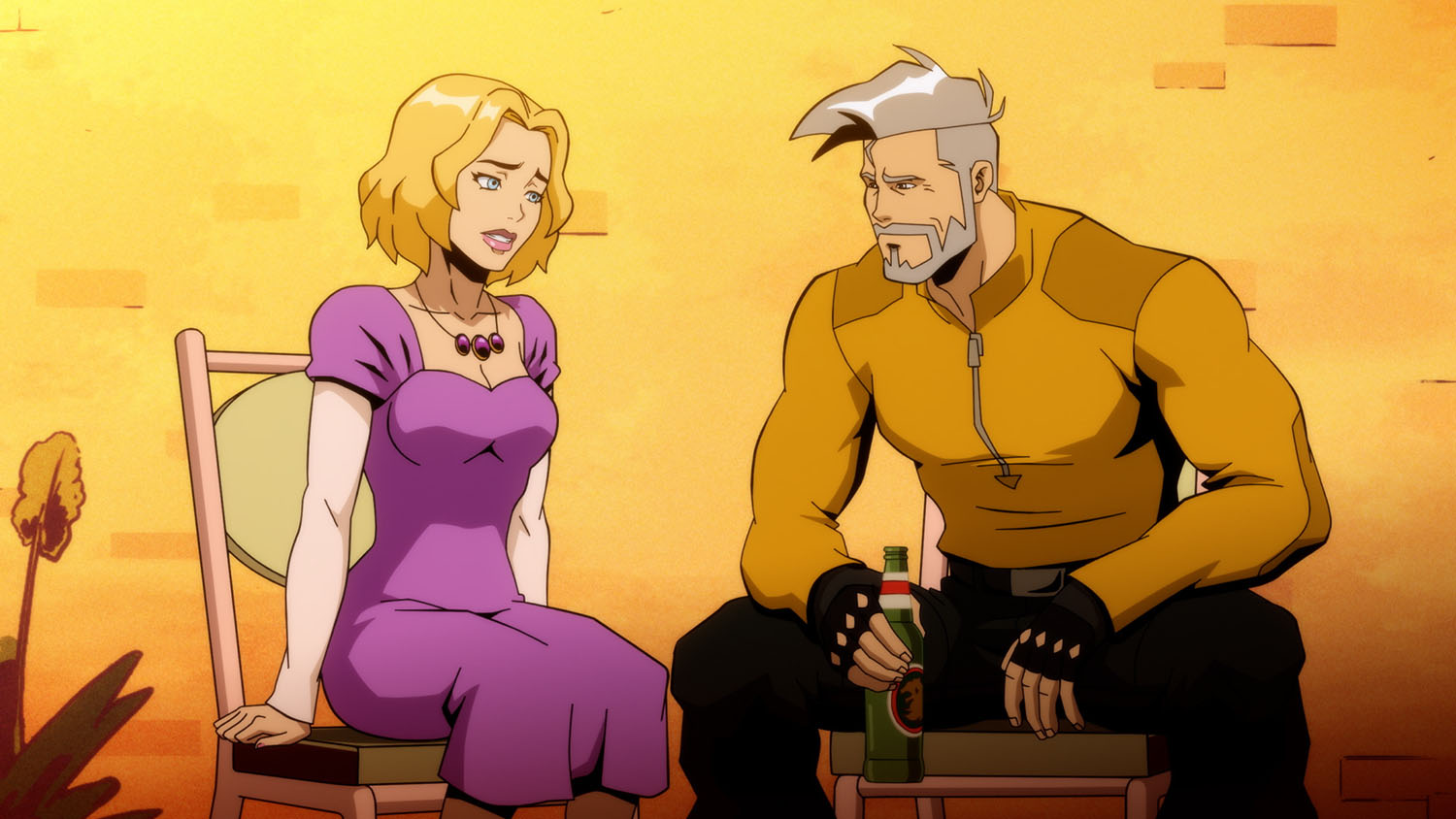
Creature Commandos doesn’t pull its punches when it comes to depicting sex and violence. What was the threshold for how much is too much?
Lorey: In terms of the violence, we wanted it to hurt. We wanted people to really feel that. But we let it get cartoony, in some ways. With the sex, it was really driven by the story’s need. Like, there’s a scene between the Bride and her Creator, that’s a creepy, creepy scene. I remember the original boards that I saw on that were more like a sex scene. We were all like, “That’s not what this is.” So, we sort of reconfigured it. If you compare that to say, in the pilot, when Princess Ilana and Flag are together, that’s like a traditional sexy scene. And so a lot of it really had to do with the content of the scene, as opposed to an overall mandate.
As you mentioned, there have already been conversations about turning the Creature Commandos into a live-action movie. Is that a committed path, or could this series eventually dovetail into a grander adventure on the big screen?
We haven’t talked about a big screen animated version of it, but it’s not a bad idea. I would guess that everything’s on the table. I know that we very much would like to do a second season of the show. And that, at some level, is dependent on James’ writing schedule, because I genuinely don’t know how he finds the time, so that’s part of it. We’d have to figure that out.
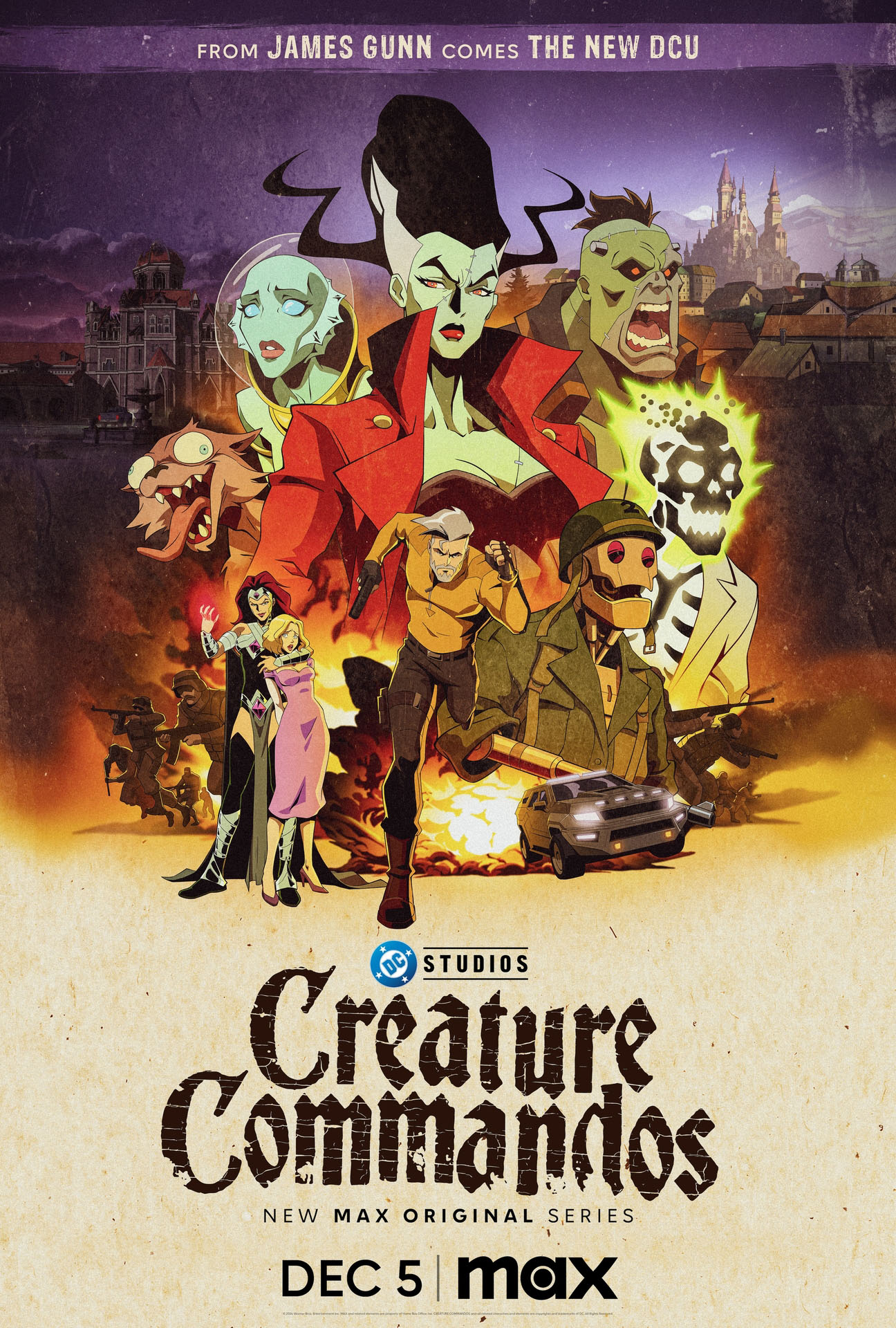
This interview has been edited for length and clarity.
